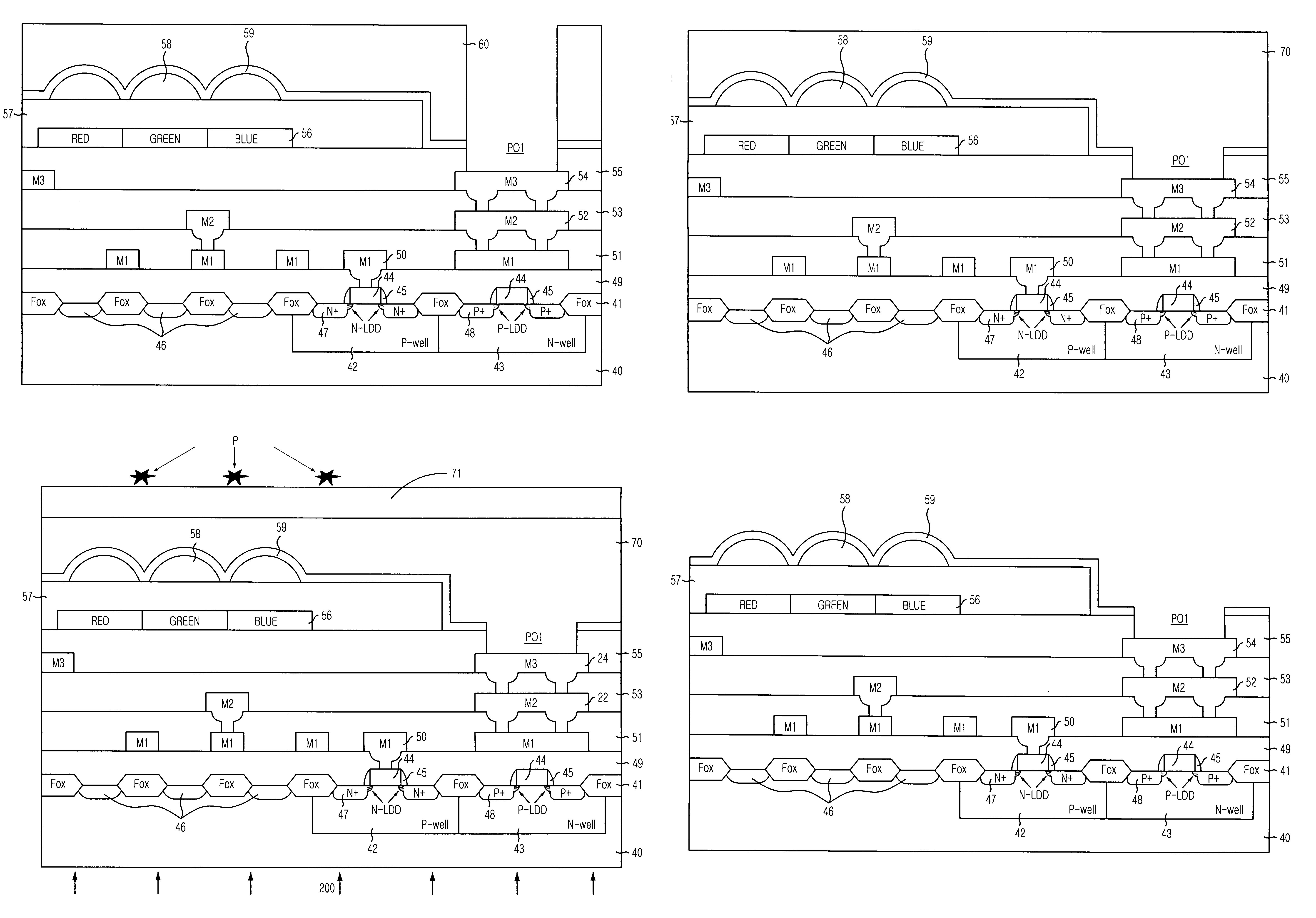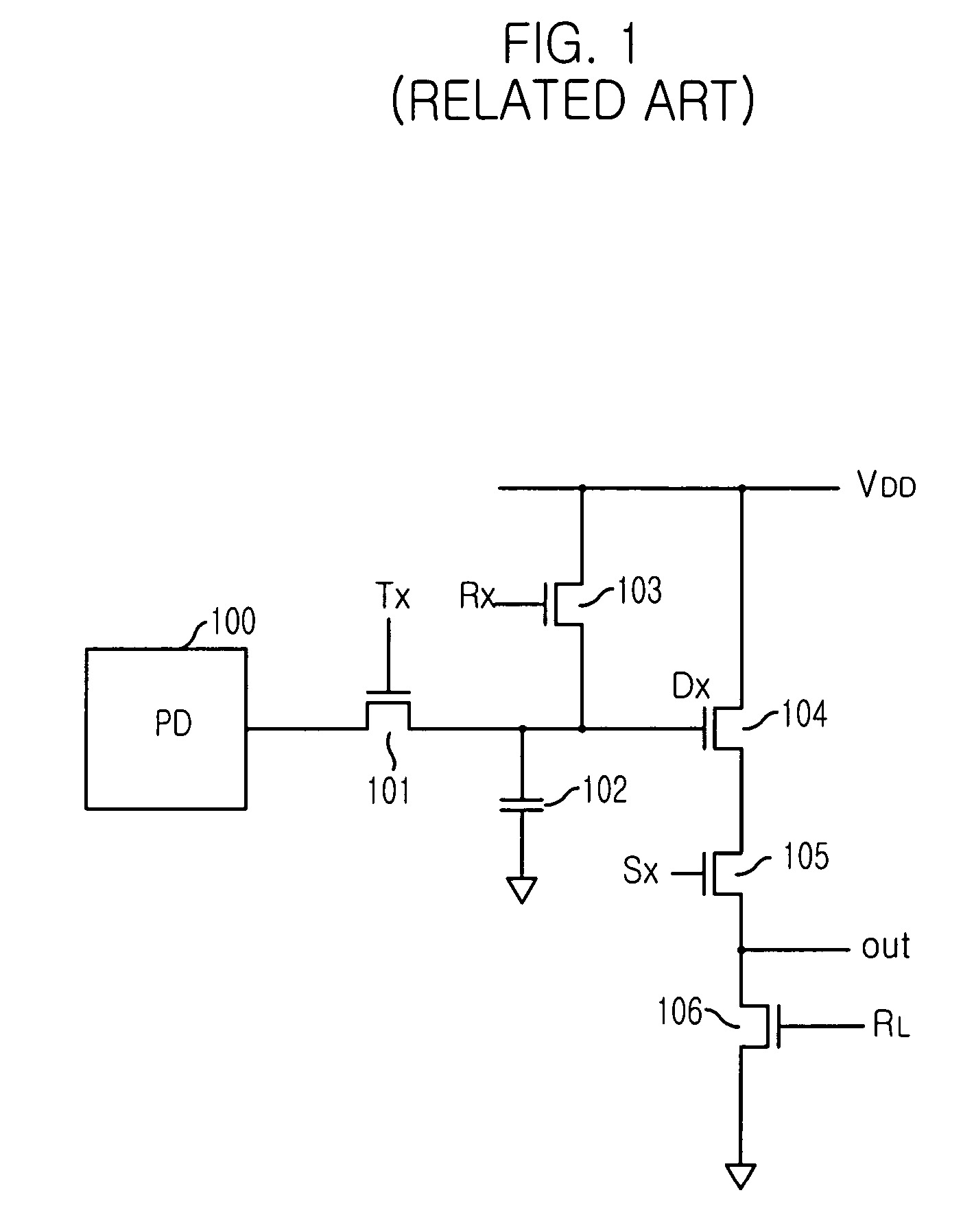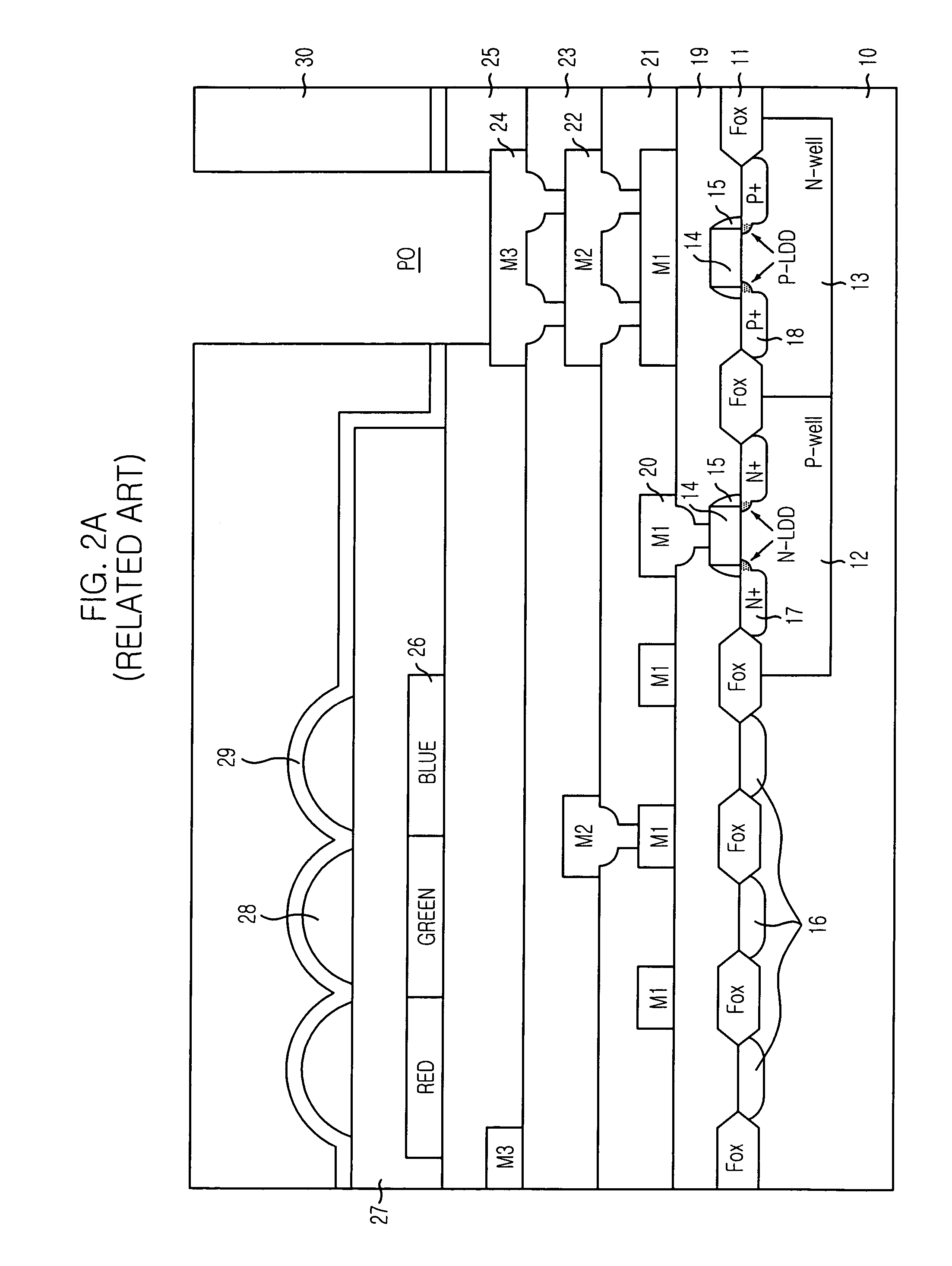Method for fabricating image sensor using wafer back grinding
a technology of image sensor and back grinding, which is applied in the direction of basic electric elements, electrical equipment, semiconductor devices, etc., can solve the problems of reducing device yield, unable to eliminate circuit units, and limited fill factor within confined areas, so as to reduce contamination by particles and
- Summary
- Abstract
- Description
- Claims
- Application Information
AI Technical Summary
Benefits of technology
Problems solved by technology
Method used
Image
Examples
Embodiment Construction
[0032]Hereinafter, exemplary embodiments of the present invention will be described in detail with reference to the accompanying drawings.
[0033]FIGS. 4A to 4D are cross-sectional views illustrating a method for fabricating an image sensor in accordance with an embodiment of the present invention.
[0034]Referring to FIG. 4A, field oxide layers 41 defining a filed region and an active region are formed over a substrate 40. A P-type well 42 and an N-type well 43 are formed using an ion implantation mask. Gate electrodes 44 and gate spacers 45 are formed over predetermined regions of the substrate 40. Unit pixels 46 including photodiodes are formed in a light sensing region, N-type ion implantation regions 47 and P-type ion implantation regions 48 with lightly doped drain (LDD) regions are formed. The N-type ion implantation regions 47 and P-type ion implantation regions 48 correspond to source / drain regions of transistors.
[0035]An inter-layer insulation layer 49 is formed over the above...
PUM
 Login to View More
Login to View More Abstract
Description
Claims
Application Information
 Login to View More
Login to View More - R&D
- Intellectual Property
- Life Sciences
- Materials
- Tech Scout
- Unparalleled Data Quality
- Higher Quality Content
- 60% Fewer Hallucinations
Browse by: Latest US Patents, China's latest patents, Technical Efficacy Thesaurus, Application Domain, Technology Topic, Popular Technical Reports.
© 2025 PatSnap. All rights reserved.Legal|Privacy policy|Modern Slavery Act Transparency Statement|Sitemap|About US| Contact US: help@patsnap.com



